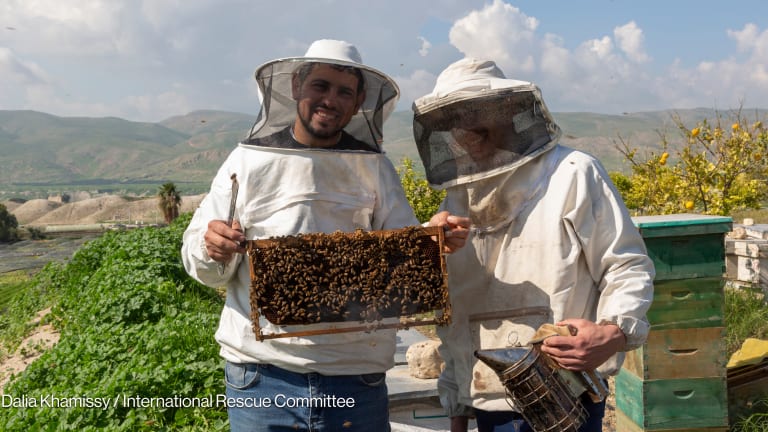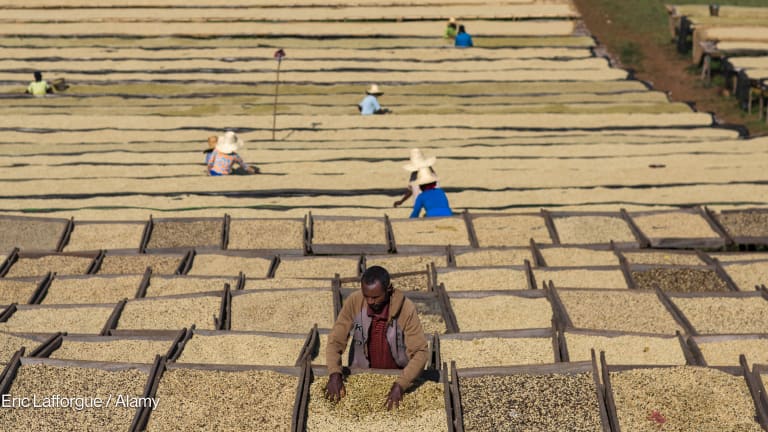
More important than speed, economic growth that is inclusive is crucial for a healthy and stable society. The first time I visited the former Soviet satellites in Central Asia two decades ago, I did not peg the region as an economic growth hotspot — but factors since then have changed my mind.
The Central Asian republics’ experience points to the benefits of broad-based growth, even as former mothership Russia has moved in another direction. Grounded by their shared Soviet history in equity — and central control — the Kyrgyz Republic and Tajikistan especially have embraced social enterprise, even when they don’t always have the tools or ecosystems that foster their growth.
Small and medium-sized businesses led by Central Asian entrepreneurs who see gaps in services and aspire to fill them are raising families’ standard of living. From microloans to business planning skills to technical classes, development programs have shifted from large hub industries to smaller, more nimble and more diverse businesses.
The notion of inclusive growth has gained traction in recent years — yet globally, rural communities are often left out of the formal economy. In some countries, the private sector has tried to loop those groups into growth but, as experts have observed, the corporate efforts were often “generally not ambitious enough.” Instead of a narrow focus on fixing particular local problems, the authors recommended re-imagining the regional ecosystem to create a more enterprise-friendly environment. That re-imagining is what many Central Asian communities have been working toward: a systemic approach to engaging people’s entrepreneurial energies and creating more opportunities.
Creating an environment for greater access
At the Aga Khan Development Network, we have grappled with this challenge. We agree that the middle layer between microloan clients and larger industry is vital in the transformation of society. Too often this missing middle is forgotten when developing entrepreneurial ecosystems. Since 2016, our initiative called Enterprise Growth Accelerator has adapted angel investing for small and medium-sized businesses, responding to the entrepreneurial demand for longer-term capital and financial instruments tailored for expansion and meeting working capital needs.
A couple of stories from the AKDN-supported incubator known as Accelerate Prosperity illustrate how entrepreneurs have made it in sectors ranging from chicken farming, textiles, and clothing, to mental health services. Accelerate Prosperity focuses on small businesses led by an ambitious entrepreneur and supports them in business planning and investments in the form of repayable grants. In a province of Tajikistan, one start-up had the idea of tapping the market demand for eggs where there was almost no local production. With $8,100 from Accelerate Prosperity, the business built poultry coops, bought chickens, and sold 5,300 eggs to retailers in the first two months. The business training was pivotal.
The value of business training also comes through in the second example. A woman named Dilangez with a passion for clothing design received a small grant and business training to grow her business and reach markets in the nearest city. “The business course was a turning point,” she said, and the new knowledge “helped me make a successful pitch to receive funding.” Now her staff has grown to seven, and she reaches 200 customers a month — see some of her designs here. The point is that such entrepreneurs in a variety of sectors foster broad-based economic growth.
Learning lessons and creating demand
The experience of development in Central Asia hasn’t been all rising boats, however. We’ve learned some hard lessons along the way. For one, simply building up production isn’t enough. To grow smaller urban markets and linkages, we had to find ways to nurture demand. In Tajikistan, we saw that cultivating lead firms could make for healthier markets. Done well, strengthening lead firms can help stabilize demand, explore value-adding activities, and narrow the gap between rural producers and nearby markets.
Central Asia, which seemed unpromising to me at first, is growing in promising ways. Kyrgyzstan has seen its Gini index, the World Bank’s gauge of inequality in family income, go from 53.7 in 1993 to 26.8 in 2014, suggesting significant improvement for Kyrgyz families in two decades. Tajikistan’s record is somewhat mixed, from a Gini index of 29.50 in 1999, it was up slightly in 2015 to 34.00. For context, inequality in the U.S. has grown from about 38 in 1990 to 41.5 in 2016.
While inequality is a challenge everywhere, there are actions we can take to create opportunities for a broader segment of the population. Fostering growth that is inclusive, with special attention to the bottom 25 percent of households, is an important start. Providing access to capital and business advisory services for social enterprises is another way to drive growth. Working with government to ensure enabling conditions for start-ups and growth-ready enterprises is irreplaceable to ensure businesses succeed. Working with lead firms for stronger supply chains and access to markets is another key learning.
These lessons can help guide other new market-based economies toward a dynamic private sector with inclusive and flexible markets. We continue to adapt these lessons in our partnerships, including new collaborations with USAID. There are many ways to get to inclusive growth, and we are determined to achieve them with a range of partners.








